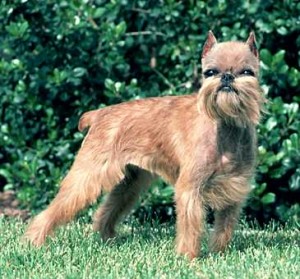 The Brussels Griffon, also referred to as the Griffon Belge, the Griffon Bruxellois, and the Belgian Griffon, is a small Belgium dog breed that was used to kill vermin in horse stables. This interesting looking little fellow stands between 7 and 8 inches tall and weighs in at a whopping 6 to 12 pounds. They come in two varieties, rough hair and smooth hair. Both versions can be found with black, black and tan, or red colored coats.
The Brussels Griffon, also referred to as the Griffon Belge, the Griffon Bruxellois, and the Belgian Griffon, is a small Belgium dog breed that was used to kill vermin in horse stables. This interesting looking little fellow stands between 7 and 8 inches tall and weighs in at a whopping 6 to 12 pounds. They come in two varieties, rough hair and smooth hair. Both versions can be found with black, black and tan, or red colored coats.
To care for this little dog you will want to brush their coat several times a week to prevent matting and to remove debris and dirt. They can usually get enough exercise to stay healthy by playing indoors, however, they also enjoy spending time frolicking outside and going for short walks. This dog will need to be trained and you will need to be consistent with your praise and corrections. If you plan on breeding this dog you should understand that they have a very difficult time whelping and only about 60 percent of puppies make it. In addition to reproductive problems, this breed also has respiratory issues and eye problems.
A painting by Jan Van Eyck portrayed the Brussels Griffon in 1434. At one time the Brussels Griffon was known as the “Belgian street urchin” and was often found killing rats in stables. Bred for their ratting abilities, their heritage is probably largely due to the Affenpinscher, as well as the Dutch Pug, Ruby English Toy Spaniel, Yorkshire Terrier and Irish Terriers.
Brussels Griffons were often kept in stables as rat catchers. Gradually they became regular members of most Belgian households. Old folk songs and tales of the period mention “bearded dogs” in reference to the spunky Brussels Griffon.
These days, the breed is still considered rare, putting a strain on available breeding stocks, especially when it comes to unscrupulous or amateur backyard breeders. To ensure purity of line, breeders now require signed contracts obliging new owners to have their pup spayed or neutered by a certain date.
The Brussels Griffon is known to be a wonderful companion dog. They fair quite well with children and other dogs even cats. They are small so apartment living would be just fine. They are affectionate but at times can be a bit stubborn. They enjoy the companionship of humans and are known to be very charming. This breed would be perfect for an individual looking for a friend or a family looking for a lovable dog to keep the children company.
To keep their wiry coat free of mats, Rough Brussels Griffons require regular brushing, and also clipping and trimming every few months.
There are two coats in this breed, the rough and the smooth. The smooth coat, like any smooth coated dog, has a seasonal shed. That means that in the spring and fall, the dead hairs fall out. The shed lasts maybe two weeks and is encouraged with warm baths followed by brushing. The second coat is rough and experiences less shedding but still requires regular brushing.
The Brussels Griffon is very active indoors and is capable of exercising on his own. They are happy in a small household or apartment and are content to live without a yard.
Due to the shortened snout that Griffons have, heat stroke is a major concern for the breed. To be left outside for any lengthy period of time can be extremely devastating for a Griffon. The breed’s smashed face may cause serious respiratory issues in extreme heat. Because of this danger Griffons are not favored for walking or living outside in warmer climates.

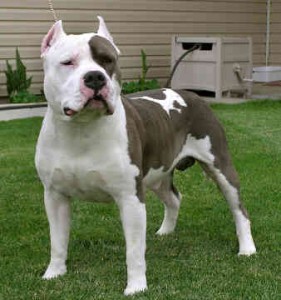

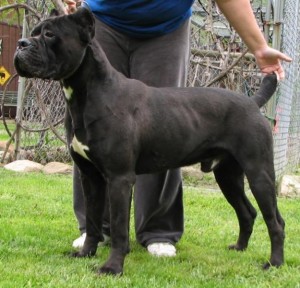

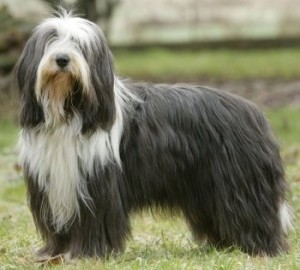
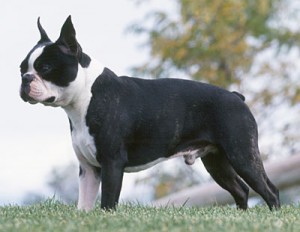

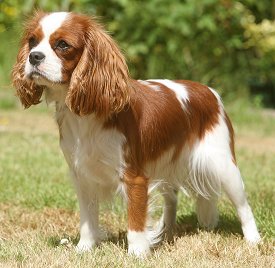

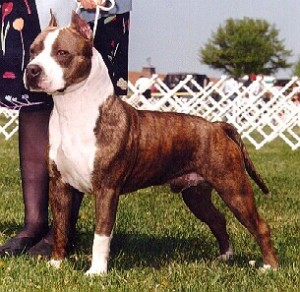
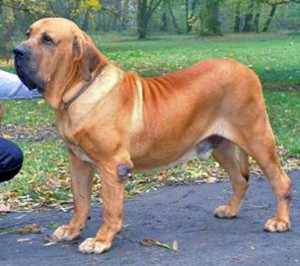
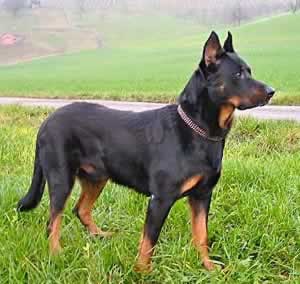
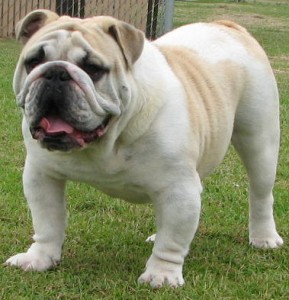




Follow Us!